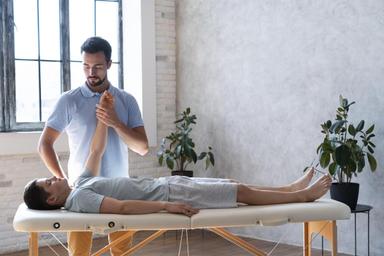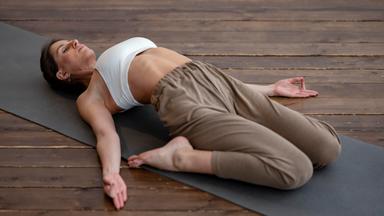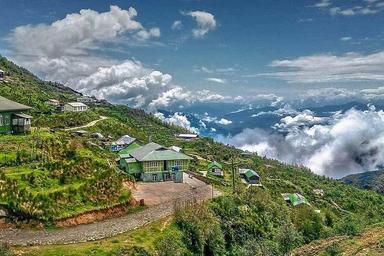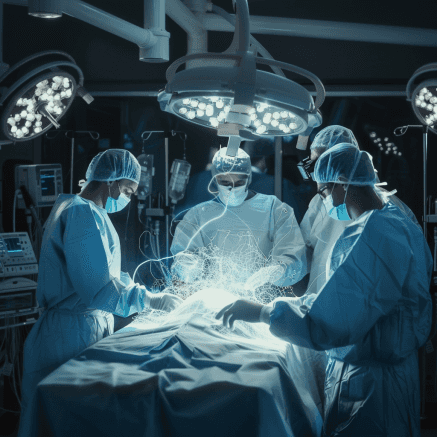
Kidney Transplant Surgery in UAE: Laparoscopic vs. Open
20 Jul, 2024
 Healthtrip Team
Healthtrip TeamFacing a kidney transplant can be a daunting experience, but understanding your surgical options can make a big difference. In the UAE, patients have the choice between laparoscopic and open surgery for their kidney transplants, each offering distinct advantages and considerations. Laparoscopic surgery is known for its minimally invasive approach, which can lead to quicker recovery and less scarring, while open surgery provides direct access and visualization of the organs. This guide will help you explore both techniques, shedding light on their procedures, benefits, and potential drawbacks, so you can make an informed decision about the best path for your treatment and recovery.
Most popular procedures in India
What is Kidney Transplant Surgery?
Kidney transplant surgery involves replacing a diseased or failing kidney with a healthy one from a donor. This procedure is crucial for patients with severe kidney disease who are no longer able to function on dialysis. The success of the transplant depends on various factors, including the surgical technique used, the skill of the surgeon, and the overall health of the patient.
Wellness Treatments
Give yourself the time to relax
Lowest Prices Guaranteed!

Lowest Prices Guaranteed!
Laparoscopic Kidney Transplant Surgery
Laparoscopic kidney transplant surgery is a cutting-edge technique that offers a minimally invasive approach to performing kidney transplants. This method involves using specialized instruments and a camera to perform the surgery through several small incisions, as opposed to a large open incision. Here's a detailed look at the procedure and its benefits:
When Laparoscopic Kidney Transplant Surgery is Needed?
Laparoscopic kidney transplant surgery is used when:
a. Less Invasive: This method is less invasive, meaning it uses smaller cuts, causes less pain, and helps the patient recover faster. It’s often chosen if the patient is suitable for it.
b. Fewer Risks: For patients who are in good health and don’t have complicated issues, laparoscopic surgery can reduce the risk of problems like infections.
c. Quicker Recovery: If a fast recovery and shorter hospital stay are important, laparoscopic surgery might be the better choice because it generally causes less discomfort.
d. Precise Technique: Sometimes, laparoscopic surgery allows for more precise work, especially if the patient’s condition isn’t too complicated.
c. Surgeon's Skills: If the surgical team is highly skilled in laparoscopic techniques and the patient’s condition fits this method, they might choose laparoscopic surgery.
Procedure
1. Preoperative Preparation:
a. Anaesthesia: The patient is administered general anaesthesia, which ensures they are completely unconscious and free from pain during the surgery. This is typically administered through an intravenous (IV) line.b. Positioning: The patient is positioned on the operating table, usually in a supine position (lying on their back). Proper positioning is essential to provide the best access to the surgical site and maintain patient safety throughout the procedure.
2. Creating Access Points:
a. Initial Incisions: The surgeon makes several small incisions in the abdominal area. These incisions are usually 0.5 to 1 cm in length and are strategically placed to provide access to the abdominal cavity without needing a large cut.b. Insertion of Laparoscope: A laparoscope, which is a thin, flexible tube with a high-definition camera and light source, is inserted through one of the incisions. The camera transmits real-time images of the internal organs to a monitor, allowing the surgeon to view the surgical field in detail.
3. Placing the Surgical Instruments:
a. Introduction of Instruments: Additional laparoscopic instruments are inserted through the other incisions. These instruments are designed to perform various surgical tasks, such as dissection, manipulation, and suturing, with precision.b. Site Preparation: The surgeon carefully prepares the area where the new kidney will be placed. This involves dissecting surrounding tissues and blood vessels to create a suitable space for the transplant.
4. Performing the Transplant:
a. Placing the Donor Kidney: The donor kidney, which has been matched and prepared, is inserted into the recipient’s abdominal cavity through one of the small incisions. This is done with the aid of specialized tools to handle and position the kidney properly.b. Connecting Blood Vessels and Ureter: Using the laparoscopic instruments, the surgeon attaches the renal artery and vein of the donor kidney to the recipient’s blood vessels. The ureter of the new kidney is also connected to the recipient’s bladder. This step is crucial for ensuring proper blood flow and urine drainage from the new kidney.
5. Finalizing the Procedure:
a. Verification: After the kidney is in place and all connections are made, the surgeon checks for proper blood flow and function of the new kidney. This may involve flushing the kidney to ensure there are no obstructions and that it is functioning correctly.b. Removing Instruments: Once the surgery is complete, the laparoscope and other instruments are carefully removed from the abdominal cavity.
c. Closing Incisions: The small incisions are closed using sutures or adhesive strips. In some cases, absorbable sutures are used to minimize the need for removal later. The area is then covered with sterile dressings to protect the wounds.
6. Postoperative Care:
a. Recovery Room: The patient is transferred to a recovery room where they are monitored as the anaesthesia wears off. Medical staff will check vital signs and ensure that the patient is stable.b. Pain Management: Pain relief is managed through medications, and the patient may receive instructions on how to manage any discomfort. The aim is to minimize pain and promote comfort during recovery.
c. Early Mobilization: Patients are encouraged to start moving around as soon as it is safe, as this helps prevent complications such as blood clots and promotes faster recovery.
Advantages
a. Reduced Recovery Time: Patients generally experience a faster recovery with laparoscopic surgery compared to open surgery. The smaller incisions result in less tissue damage, allowing patients to return to normal activities more quickly.
b. Minimal Scarring: The small incisions used in laparoscopic surgery result in minimal scarring, which can be a significant cosmetic advantage for many patients.
c. Less Postoperative Pain: Patients typically report less pain and discomfort after laparoscopic surgery. This can reduce the need for strong pain medications and contribute to a more comfortable recovery period.
d. Shorter Hospital Stay: Due to the less invasive nature of laparoscopic surgery, patients often have shorter hospital stays, which can help reduce overall healthcare costs.
e. Faster Return to Normal Activities: The quicker recovery and reduced pain associated with laparoscopic surgery often allow patients to resume their daily activities and work sooner compared to those who have undergone open surgery.
Open Kidney Transplant Surgery
Open kidney transplant surgery is a traditional and well-established method for performing kidney transplants. Unlike laparoscopic surgery, which uses small incisions, open surgery involves a larger incision to provide direct access to the abdominal cavity. Here’s a comprehensive look at the procedure:
When Open Kidney Transplant Surgery is Needed?
Open kidney transplant surgery is needed when:
a. Complex Anatomy: If the patient's body has complicated structures or scars from previous surgeries, open surgery might be better to see and handle these issues.
b. Previous Surgeries: If the patient has had many surgeries before, there might be a lot of scar tissue. Open surgery allows doctors to deal with this more effectively.
c. High Risk: If the patient has multiple health problems or a tricky medical history, open surgery might be safer because it allows for more control during the procedure.
d. Surgeon's Experience: Some surgeons are more skilled with open surgery, especially in difficult cases, so they might choose this method to ensure the best outcome.
e. Technical Problems: If laparoscopic (minimally invasive) surgery becomes too challenging or risky, doctors might switch to open surgery to complete the procedure safely.
Procedure
1. Preoperative Preparation:
a. Anesthesia: The patient is given general anaesthesia to ensure they are completely unconscious and pain-free throughout the surgery. This is administered through an intravenous (IV) line, and anaesthetic gases are used to maintain anesthesia during the operation.b. Positioning: The patient is positioned on the operating table in a supine position (lying on their back). Proper positioning is crucial for optimal access to the abdominal cavity and for maintaining patient safety throughout the surgery.
2. Making the Incision:
a. Incision Location: A large incision is made in the abdominal area, typically along the midline or slightly to one side. The length of the incision can vary but is usually about 15 to 30 cm (6 to 12 inches) long, depending on the patient’s anatomy and the surgeon’s approach.b. Accessing the Abdominal Cavity: The surgeon carefully dissects through the layers of skin, subcutaneous tissue, and abdominal muscles to reach the abdominal cavity. This incision provides direct visualization and access to the organs involved in the transplant.
4. Preparing the Transplant Site:
a. Exposure of the Kidney Area: The surgeon identifies and exposes the area where the new kidney will be placed. This involves gently moving aside other organs and structures to create a suitable space for the transplant.b. Assessment of Blood Vessels and Ureter: The surgeon assesses the recipient’s blood vessels and ureter (the tube that carries urine from the kidney to the bladder) to prepare for the connection with the donor kidney.
5. Performing the Transplant:
a. Placing the Donor Kidney: The donor kidney is carefully placed into the recipient’s abdominal cavity through a large incision. The placement is done with precision to ensure optimal positioning.b. Connecting Blood Vessels: The surgeon attaches the renal artery and vein of the donor kidney to the recipient’s blood vessels. This connection allows blood to flow into and out of the new kidney, which is essential for its function.
c. Attaching the Ureter: The surgeon connects the ureter of the new kidney to the recipient’s bladder. This step is crucial for ensuring that urine produced by the new kidney can be properly drained from the body.
6. Finalizing the Procedure:
a. Checking Function: The surgeon verifies that the new kidney is functioning correctly by checking blood flow and urine output. The kidney may be flushed to ensure there are no obstructions and that it is adequately receiving blood and draining urine.b. Closing the Incision: Once the transplant is complete and all connections are secure, the surgeon closes the large incision in layers. The abdominal muscles are sutured, followed by the subcutaneous tissue and skin. The incision is then covered with sterile dressings.
7. Postoperative Care:
a. Recovery Room: After the surgery, the patient is transferred to a recovery room where they are monitored as the effects of anaesthesia wear off. Vital signs are closely observed, and pain management is provided.b. Pain Management: Pain relief is managed with medications, including opioids and non-opioids, to ensure the patient is as comfortable as possible. The surgical team will monitor and adjust pain management as needed.
c. Early Mobilization: Patients are encouraged to start moving around and walking as soon as it is safe to do so. This helps prevent complications such as blood clots and promotes faster healing.
Open kidney transplant surgery remains a reliable and effective method for performing kidney transplants. Despite its more invasive nature compared to laparoscopic surgery, it provides a direct approach that can be advantageous in certain cases, particularly when complex anatomical considerations are involved.
Advantages
a. Direct Visualization and Access: The large incision provides a clear, unobstructed view of the abdominal cavity, allowing the surgeon to directly visualize and manage the kidney, blood vessels, and surrounding structures. This is particularly useful in complex cases where precise placement and connection of the donor's kidney are critical.
b. Easier Handling of Complex Cases: Open surgery is advantageous when dealing with complicated anatomical situations. The larger incision offers greater manoeuvrability, making it easier to handle anatomical variations or complications that may arise during the transplant.
c. Less Risk of Injury to Surrounding Structures: The direct access provided by open surgery lowers the risk of accidentally damaging nearby organs or tissues. In contrast, laparoscopic techniques with limited view and instruments may increase the risk of inadvertent injuries.
d. Potentially Better for Larger Kidneys: Open surgery can be more suitable for transplanting larger kidneys or when the donor's kidney is significantly larger than usual. The larger incision facilitates the insertion and positioning of larger organs with greater ease.
e. Immediate Problem Solving: The open surgical approach allows for immediate problem-solving if unexpected issues arise, such as bleeding or complications with the kidney’s placement. Direct access enables the surgeon to address and rectify problems more effectively during the procedure.
Laparoscopic vs. Open Surgery
A. Procedure and Technique
a. Laparoscopic Surgery: This approach is minimally invasive, involving several small incisions rather than one large cut. During the procedure, the surgeon uses a laparoscope (a thin tube with a camera) and other specialized instruments inserted through these small incisions. The camera provides real-time images of the internal organs on a monitor, guiding the surgeon with high precision. This technique allows for delicate manoeuvring and minimal disruption to the surrounding tissues.
b. Open Surgery: In contrast, open kidney transplant surgery requires a single large incision in the abdomen. This larger cut allows the surgeon to directly view and access the kidney and surrounding structures. This traditional method is more straightforward in terms of visibility and access, making it easier to handle complex situations where precise manipulation is needed. The open approach provides an unimpeded view and more direct access to the surgical site.
B. Recovery and Postoperative Impact
a. Laparoscopic Surgery: Recovery from laparoscopic surgery is typically quicker and less painful. The smaller incisions result in less tissue damage and lower postoperative pain, which often translates into a shorter hospital stay and faster return to normal activities. Patients usually experience less scarring, which can be cosmetically favourable. However, laparoscopic surgery requires advanced technology and specialized training, which may not be available in all hospitals.
b. Open Surgery: Recovery from open surgery tends to be more challenging due to the larger incision. Patients may experience more significant pain and require a longer recovery period. The larger wound means that it takes more time to heal, and there may be more visible scarring. Despite these factors, many patients recover well with proper postoperative care, and the procedure remains effective for a wide range of complex cases.
C. Suitability and Complexity
a. Laparoscopic Surgery: This method is ideal for cases where the patient's anatomy allows for the use of minimally invasive techniques. It is particularly advantageous when a quicker recovery and less postoperative pain are priorities. However, laparoscopic surgery requires sophisticated equipment and the surgeon’s proficiency with the technique, which might not be available in every healthcare setting. It’s also less suitable for extremely complex cases where direct access is critical.
b. Open Surgery: Open surgery is often chosen for more complex or challenging cases where detailed visualization and direct access are necessary. It is beneficial when dealing with anatomical variations, severe scarring from previous surgeries, or situations where the donor's kidney is unusually large. The larger incision provides better access and allows for immediate adjustments if complications arise during the transplant.
How can HealthTrip assist with your treatment?
If you're seeking Treatment in UAE, let HealthTrip be your compass. We support you throughout your medical journey with the following:
- Access to top doctors in 38+ countries and the largest health travel platform.
- Partnerships with 1500+ hospitals, including Fortis, Medanta, and more.
- Treatments in neuro, cardiac care, transplants, aesthetics, and wellness.
- Post-treatment care and assistance.
- Teleconsultations with leading doctors at $1/minute.
- Over 61K patients served.
- Access Top treatments and packages, such as Angiograms and many more.
- Gain insights from genuine patient experiences and testimonials.
- Stay updated with our medical blog.
- 24/7 unwavering support, from hospital formalities to travel arrangements or emergencies.a
Ultimately, choosing between laparoscopic and open kidney transplant surgery comes down to what works best for you. Both methods have their unique benefits and drawbacks. Laparoscopic surgery is less invasive and often means a quicker recovery, while open surgery offers a more direct approach. Understanding these differences can help you make a choice that fits your needs and lifestyle. No matter which technique you choose, the goal is the same: to have a successful transplant and get back to living your life. Talking things through with your surgeon will give you the clarity you need to make the best decision for your health and well-being.
Related Blogs

Liver Transplantation and Immunology: Advancements and Insights from India
IntroductionLiver transplantation is a life-saving surgical procedure that involves replacing
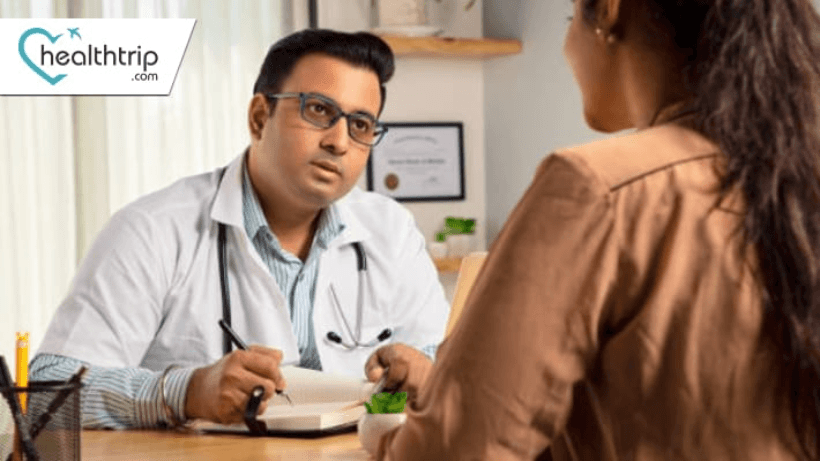
Advancements in Liver Transplantation: A Focus on India
IntroductionLiver transplantation has witnessed significant advancements globally, and India is

Surgical Options for Liver Transplant in Thailand
IntroductionThe field of liver transplantation has made significant strides in

Exploring Liver Transplant Treatments in the UAE
IntroductionThe United Arab Emirates (UAE) has rapidly emerged as a

Mouth Cancer: Top FAQs Addressed by UAE Experts
Introduction:Mouth cancer, also known as oral cancer, is a serious

Spinal Surgery for Disc Herniation in the UAE
IntroductionSpinal disc herniation is a common and debilitating condition that







